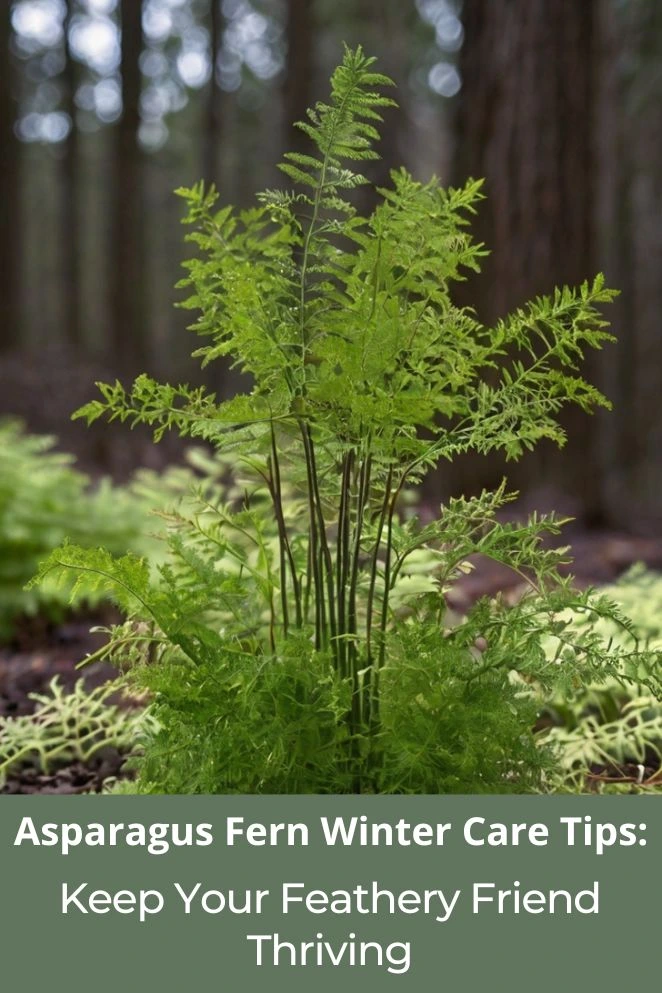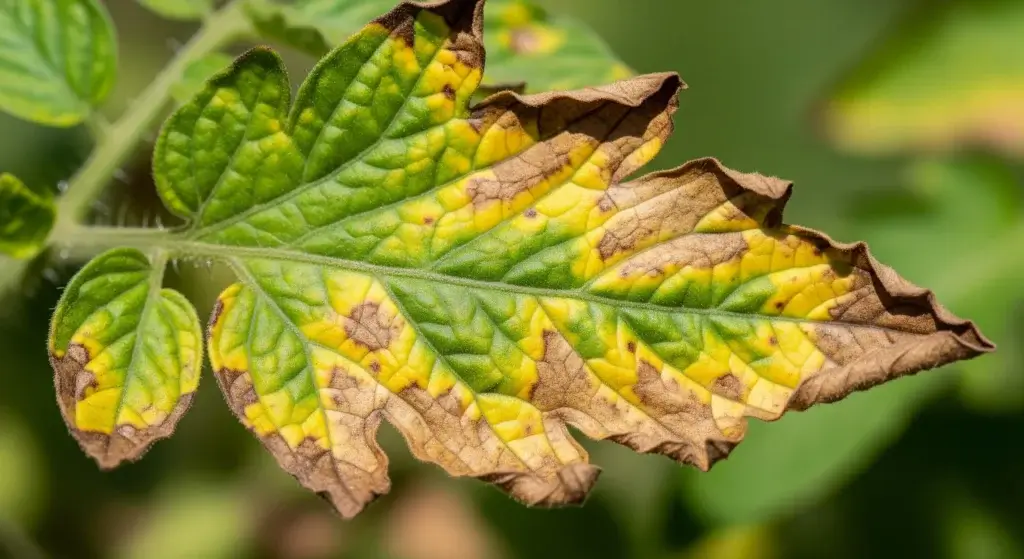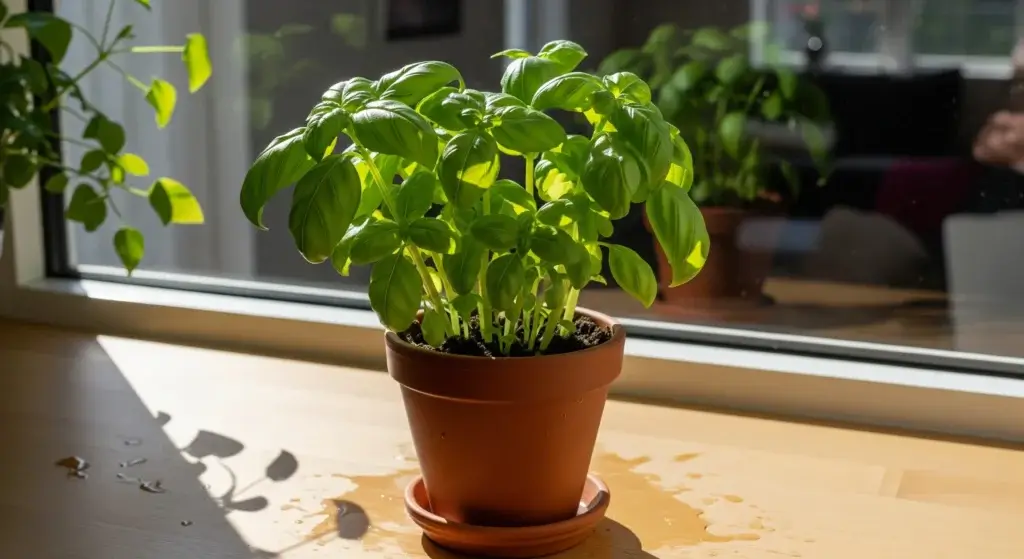
Winter can be rough on your asparagus fern, but don’t freak out—I got you.
Fun fact: it’s not even a real fern, just a sneaky cousin of the asparagus you eat.
Here’s the deal: they look soft and feathery, but cold makes them super moody—yellow leaves, drama everywhere.
Give ’em a little extra care when temps drop, and they’ll stay lush and thriving till spring.
Understanding Your Asparagus Fern’s Winter Needs
Temperature
Asparagus ferns are straight-up divas about the cold.
They’re from sunny South Africa, not some snowy mountain, so freezing temps freak them out.
Keep ‘em comfy between 55–70°F (13–21°C).
If it drops below 50°F (10°C), they’ll start dropping those feathery leaves like confetti at a sad party.
Keep them away from:
- Drafty windows that feel like the Arctic.
- Heat vents or radiators. That hot-then-cold rollercoaster makes them extra dramatic.
Watering
This is where most people mess up. In summer, ferns drink like athletes.
In winter? They’re basically Netflix-bingeing on the couch. They want small sips, not giant gulps.
The hack: poke your finger in the soil.
If the top inch feels dry, give it some room-temp water (cold water shocks roots—ouch).
If it’s still damp, back off. Don’t smother it.
Overwatering
- Yellow leaves starting at the bottom.
- Heavy, soggy soil that smells… gross.
Underwatering
- Crispy, brown fronds.
- A pot that feels lighter than your empty backpack.
Humidity
Winter air indoors is desert-level dry thanks to heaters, and your fern hates it.
What it really wants is jungle vibes.
Here’s how to cheat the system without a humidifier:
- Pebble tray: A tray with pebbles and water under the pot (but don’t drown the pot). Instant mini spa.
- Plant squad: Put it near other plants—they literally breathe moisture and help each other out.
- Misting: Quick spritz a couple times a week. Think of it as giving your plant a skincare routine.
Light
Winter light is weak sauce, and your fern will start reaching like it’s trying to touch the ceiling if it’s not happy.
Solution? Move it to the brightest spot you’ve got—south or east-facing windows are gold.
If it still looks stretched out or faded, grab a cheap LED grow light. It’s like giving your plant its own vitamin D lamp.
Lack of light looks like:
- Long, skinny, “leggy” growth.
- Washed-out green instead of that lush jungle vibe.
Common Winter Problems and Solutions
Leaf drop
This is the asparagus fern’s favorite winter performance.
You’ll walk in, see a pile of tiny green needles on the floor, and instantly think, “Welp, it’s dead.” Chill. It’s not dying—it’s just being dramatic.
What it’s usually saying:
- “BRR, I’m freezing over here!” → Move it away from drafty windows or doors.
- “I can’t tell if I’m drowning or dehydrated!” → Stick your finger in the soil. Dust-dry? Water. Muddy mess? Stop.
- “This air feels like the Sahara!” → Grab that spray bottle or set up a pebble tray.
Yellowing leaves
A few yellow fronds? No big deal—it’s just tossing its old wardrobe.
But if your whole plant is going lemon-colored, that’s a red flag.
What it’s probably yelling:
- “My feet are soaked and I hate it!” → You’re overwatering. Let the soil dry out a bit.
- “I need snacks!” → Except no, not in winter. Fertilizer now will just mess it up. More likely it’s sulking from low light, not hunger.
Pests
Winter’s dry air is like an Airbnb invite for spider mites—tiny plant vampires that suck the juice out of your fern.
If you spot faint webs or your plant looks dusty and tired, that’s them.
How to fight back:
- Crank up the humidity—mites hate it.
- Give your fern a spa day. Every couple weeks, pop it in the sink and rinse with lukewarm water. It’s like a shower that washes away both dust and freeloaders.
- If you catch sticky scale bugs or webbing, break out neem oil or insecticidal soap. That’s basically eviction notice with no appeal.
Fertilizing Guidelines for Winter
Your asparagus fern in winter is basically that friend who wants to sleep till noon and live under a blanket.
It’s not growing much, so dumping fertilizer on it now is like shoving a full plate of spaghetti at someone mid-nap.
All you’ll get is a cranky plant with root problems.
Here’s the rule: just stop.
From late fall to early spring, hide the fertilizer bottle in the back of the cupboard and forget about it. Your fern doesn’t need it.
If you really, really can’t resist (I get it—we all wanna “do something”), then give it the tiniest snack: half-strength fertilizer, once every 6–8 weeks.
That’s like giving it a cracker, not a full buffet.
But honestly? Skipping it is safer.
Pruning and Maintenance During Winter
Pruning
This isn’t surgery, it’s just a quick glow-up.
Snip off the brown, yellow, or crispy stems right at the soil—don’t be scared, it helps fresh growth later.
If it’s a jungle in there, cut a couple of the oldest, thickest stems so light and air can reach the middle.
Pro tip: wear gloves. I once pruned mine bare-handed and ended up with itchy arms like I’d wrestled a cat. Never again.
The leaf shower
Dust = clogged pores.
Every few weeks, pop your fern in the sink or tub and rinse it with lukewarm water on a gentle spray.
It’s basically a plant facial—instant shine, easier breathing, happier fern.
Troubleshooting Guide: Quick Solutions for Common Winter Issues
Problem: It’s dropping leaves like crazy after you brought it inside.
- What’s up: Total drama queen moment. Moving it indoors stressed it out, and now it’s having a meltdown. Totally normal.
- Fix: Find it a solid spot with good light and then LEAVE IT. No more musical chairs. Give it a couple weeks and it’ll chill out. Promise.
Problem: The tips of the leaves are brown and crispy.
- What’s up: It’s either roasting in dry winter air or it hates the chlorine in your tap water. Plants are picky like that.
- Fix: Boost the humidity—pebble tray, misting, plant squad, whatever works. And if you can, switch to filtered water. I even use my fish tank water sometimes—my ferns went full jungle mode after that.
Problem: It’s just… sitting there. Not growing at all.
- What’s up: Relax. It’s not dead, it’s napping. Winter is nap season.
- Fix: Go easy on the water, hide the fertilizer, and wait it out. Come spring, it’ll wake up and start shooting out new green like it’s making up for lost time.
Problem: It’s turning yellow, starting from the bottom leaves.
- What’s up: You’re being too nice. Overwatering = soggy roots = sad fern. Basically, you’re drowning it with love.
- Fix: Step away from the watering can. Let the soil dry out between drinks. Finger test is key—dry top inch means water, otherwise, hands off.
Special Considerations for Different Asparagus Fern Varieties
Asparagus Setaceus
This one looks like a soft little cloud, all feathery and delicate—but don’t let that fool you.
It’s the diva of the group. Dry winter air? Instant meltdown.
Needles everywhere. Total drama.
Your job: Treat it like royalty. Pebble tray is a must, and if you’ve got a humidifier, park it right next to this fern. Think spa day, every day.
Asparagus Densiflorus
This is the one with the upright, fluffy tails that look like little green foxes.
It’s way more chill than the Plumosa—less fussy about humidity, more “whatever” about temp changes.
Still, a freezing draft will wreck it.
Your job: Don’t stick it by a cold window, and you’re golden. Honestly, this one’s a great starter fern if you’re just testing your plant-parent skills.
Asparagus Sprengeri
This is the classic trailing one with long, viney arms.
It’s super relaxed compared to the others, like the friend who’s always down to hang. It’ll tolerate your dry winter apartment without too much whining.
Your job: Don’t ignore it completely—it’ll be way happier with the occasional mist or pebble tray.
It won’t complain, but when you give it that extra love, it absolutely glows.
Conclusion: Mastering Asparagus Fern Winter Care
Keep it warm (but not toasty), water less (but don’t ghost it), and give it humidity. Seriously—mist or pebble tray = happy fern.
Yeah, it might get moody when winter hits, but that’s normal.
Like switching to a puffy jacket—awkward at first, then fine.
Biggest rule? Do less. Less water, less food, less moving. Stay chill and consistent.
Stick with that, and by spring your fern will go full glow-up mode. You’ll look like a plant pro without even trying.



